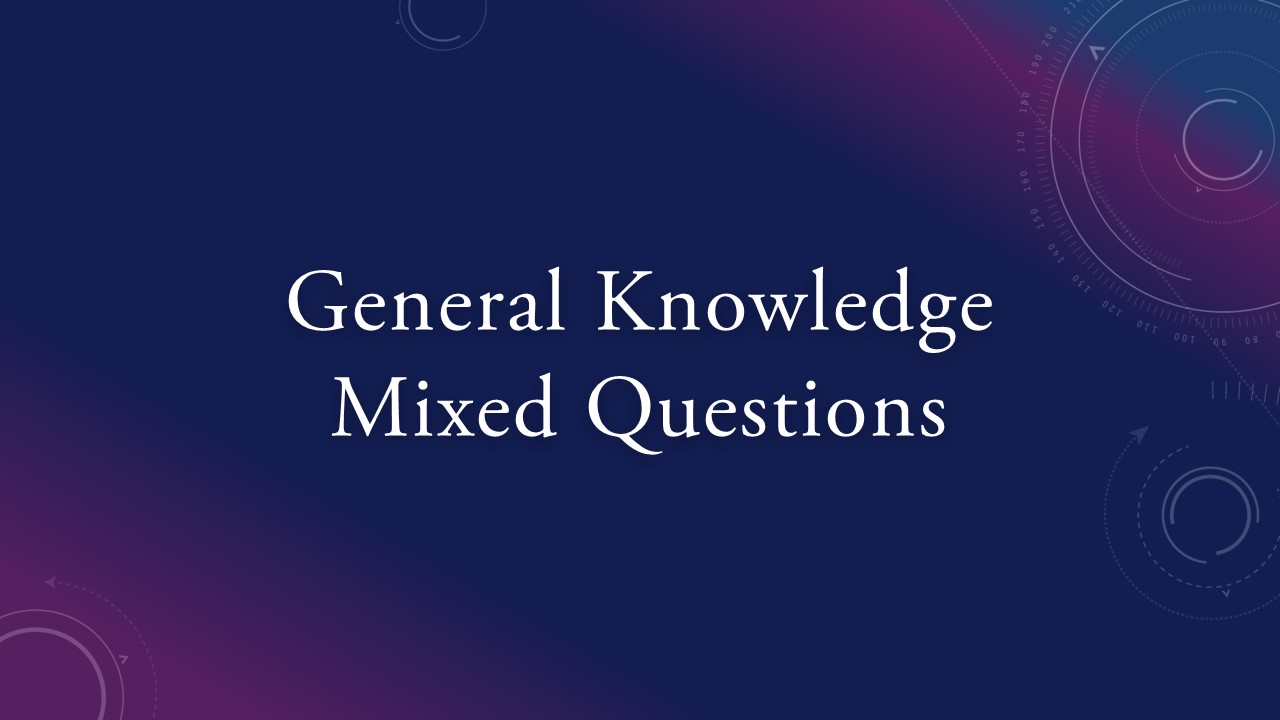- Total Questions : 25
- Total Marks : 50
- Mark Deduction : 0.5
Question No.1
A man standing on an edge of a cliff throws a stone vertically upwards with a certain speed. He then throws another stone downwards with the same speed. Find the ratio of the speeds of the two stones when they hit the ground
Correct Answer :
B
Select Answer Question No.2
Which Indian industry is employing a large number of workers?
Correct Answer :
A
Select Answer Question No.3
In which house is the presiding officer not a member of that house?
Correct Answer :
A
Select Answer Question No.4
The longest river in Europe is ____
Correct Answer :
D
Select Answer Question No.5
For the annexation of which Indian Kingdom the "Doctrine of Lapse" was not followed?
Correct Answer :
D
Select Answer -
States that were annexed by Dalhousie by applying ‘Doctrine of Lapse’ are as follows:
- The States of Satara (1848)
- Jaipur (1849)
- Sambhalpur (1849)
- Bahat (1850)
- Udaipur (1852)
- Jhansi (1853)
- Nagpur (1854)
Question No.6
"Residuary Powers" under the Indian Constitution means_________
Correct Answer :
D
Select Answer Question No.7
Which of the following films directed by Satyajit Ray is based on the story Nastaneer written by Rabindranath Tagore?
Correct Answer :
A
Select Answer Question No.8
The concept of the concurrent list in the Indian Constitution is borrowed from the Constitution of ___
Correct Answer :
C
Select Answer Question No.9
The filtration unit of Kidney is_________
Correct Answer :
C
Select Answer Question No.10
The longest river of peninsular India is ________
Correct Answer :
C
Select Answer Question No.11
What is a neuron?
Correct Answer :
D
Select Answer Question No.12
The equilibrium of a firm under perfect competition will be determined when________
Correct Answer :
D
Select Answer Question No.13
Who among the following introduced the Mansabdari system?
Correct Answer :
A
Select Answer Question No.14
Minorities Rights Day is observed in India on______
Correct Answer :
D
Select Answer Question No.15
2018 Hokey World Cup was organised in_____________
Correct Answer :
C
Select Answer Question No.16
Which Sharqui ruler of Jaunpur was also called Qaranfie?
Correct Answer :
D
Select Answer Question No.17
The French power was nearly wiped off from India after losing against the British in the Battle of Wandiwash which was fought in_________
Correct Answer :
B
Select Answer Question No.18
Who was the founder of the Aligarh Movement?
Correct Answer :
A
Select Answer Question No.19
A vase depicting the folk tale "The Thirsty Crow" was found at_______
Correct Answer :
C
Select Answer Question No.20
By whom the first republic of the world was established in Vaishali?
Correct Answer :
D
Select Answer Question No.21
The method of moderate leaders of Congress was_____
Correct Answer :
C
Select Answer Question No.22
Which of the following countries enjoys a Federal form of government?
Correct Answer :
C
Select Answer Question No.23
Part IV of Constitution of India deals with___________
Correct Answer :
A
Select Answer - Part IV (Article 36–51) of Indian constitution deals with Directive Principles of State Policy of India (DPSP)
- The Directive Principles of State Policy of India (DPSP) are the guidelines or 15 principles given to the federal institutes governing the State of India, to be kept in citation while framing laws and policies.
- The principles have been inspired by the Directive Principles given in the Constitution of Ireland which are related to social justice, economic welfare, foreign policy, and legal and administrative matters.
- These provisions, contained DPSP, are not enforceable by any court.
- Indian Constitution has not originally classified DPSPs but on the basis of their content and direction, they are usually classified into 3 types
- Socialistic Principles,
- Gandhian Principles
- Liberal-Intellectual Principles
Question No.24
Which Constitutional amendment removed the Right to property from the list of Fundamental Rights?
Correct Answer :
D
Select Answer - Right to Property ceased to be a fundamental right with the 44th Constitution Amendment in 1978.
Question No.25
The radiant energy of the sun results from_____
Correct Answer :
D
Select Answer - The Sun generates its energy by nuclear fusion of hydrogen nuclei into helium.
00:00
Previous





0 Comments